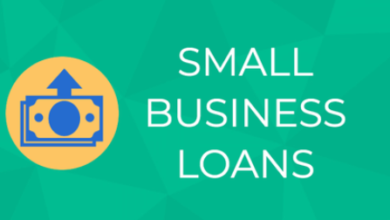Student Money Guide: How to Pay for School and Have a Life – for Both Students and Parents

Attending college or university is so much more than going to classes. It’s about the first experiences living as an adult; covering expenses, and planning a budget. It’s a challenge both for students and their parents (or guardians). So, how to prepare in advance for this very special moment?
It all starts with the basics:
- How do make kids understand the value of money?
- How to install a bank account?
- How to choose a registered education savings plan (RESP)
We’ve got you covered! In this article, you’ll find practical advice for people entering a new phase of their lives; you’ll see how the budget can be planned without a Master’s degree in finances; how to calculate your monthly expenses, so that later without going to various loan companies like payday loans in Winnipeg to cover your spending; and, finally, how to cover tuition costs without drowning in debt.
Helping Your Kids Financially
First, you should sit down and create a savings plan. Then, you can find an appropriate option to support your child: whether by choosing a registered education savings plan (RESP) or contributing to a tax-free savings account (TFSA).
RESP
A tax-deferred savings plan for covering post-secondary education costs, such as tuition, books, and other expenses for trade school, college, or university.
TFSA
A savings account, which you can use anytime to withdraw the costs. Inside the TFSA, the amount of money grows tax-free; however, there are annual contribution limits.
Getting the Habit of Saving
People who know the value of a dollar, easily understand the matter of saving. A good way to get started with financial education is to settle the bank account for your child. Look for one charging low or no fees, because the last thing you want is the bank eating your kids’ small business contributions.
Here’s the list of the best kids’ bank accounts in Canada and the benefits you get:
- RBC Leo’s Young Savers Account — a pleasant feature of this plan is a $25 starting bonus. It charges no monthly fees, and allows up to 15 debit transactions per month;
- Scotiabank Getting There Savings Program for Youth — this bank account has a surprise for all movie fans, who can earn Scene Points with every purchase they make. Plus, future students can use the reward toward a gift card or a tech gadget;
- TD Youth Account — with the TD Access Card, parents can set up a recurring preauthorized transfer from their own account to their child’s;
- CIBC Advantage for Youth Account — this plan is positioned as a savings account. As the kids grow, they can access a prepaid Visa card as well as online and mobile banking;
- Tangerine Children’s Savings Account — among the above-mentioned plans for kids, Tangerine charges the highest interest rate (about 0.30 %). You also have to be a customer to pair your account with the one for your kid. The bonus here is having unlimited transactions and no minimum balance on a card.
Setting Up the Kids for a Financial Success
To become successful at money management, you need time and practice. The younger your children are, the more chances you have to save.
Let’s break down the periods in life when you can make your kids financially educated:
- 0-6 y.o. — at this age, you can start making savings notes. Giving kids an allowance and letting them make money mistakes (and wins!) will help them to grasp the fundamentals.
- 7-12 y.o. — at this age, kids start having independence. However, they still rely on your support. It’s a great time to let these little people have a financial allowance and set small goals for the future. They should understand the reasons behind spending money and the outcomes of saving.
- 13-17 y.o. — at this age, most teenagers earn their first income at part-time jobs. It’s an appropriate time for them to start saving for short-term goals (like a school trip), or long-term goals (like contributing to post-secondary education).
- 18 y.o. and older — at this age, hopefully, you kids already have a grasp on the value of money. If yes, it’s time to have a conversation about budgeting and student debt.
People who know the value of the dollar, usually have good relationships with money. However, knowing how to save is not enough. You should also talk to the kids about setting a budget and tracking spending costs.
Saving Money for Education
There are many ways to pay off education costs. On average, the cost of education in Canada is a little bit less than $7000 per year. So, it isn’t cheap. Aside from your savings and contributions from your parents, you can apply for grants, scholarships, and bursaries.
In case you need to cover a post-secondary education, but don’t have enough savings, try using a student loan. Most of the provincial government loans, work in conjunction with federal loans to help you pursue the education you want.
How to Save During School
Remember that you can benefit from a student status by using special discounts and possibilities for finding cheaper travel options.
Credit Cards for Students
While earning school credits, you can still take care of your credit score. There are different banks offering perks for students, such as cashback on groceries or free tickets to the movies. Check out the best deals with the following providers: BMO CashBack Mastercard, PC Financial Mastercard, and Koho Prepaid Mastercard.
In addition to the most recent Bath & Body Works Black Friday discounts, you can also have access to Credit Card deals.
Bank Accounts for Students
Recently, we’ve discussed the best bank accounts to install for your kids. Certainly, when your budget is tight, the last thing you want is to pay a $20 monthly fee. Therefore, low and no-fee accounts can be perfect for students, especially if they offer unlimited transactions and bonus points.
Summary
Explaining financial stuff to your kids can seem tough. Surely, they don’t take money seriously, since their parents cover all the expenses.
But someday your children will be students, and then — adult people. They have to be ready to take responsibility for their lives and build long-term goals.
Remember, that covering education is not a burden. There are multiple ways to solve this problem — from a savings account to a student loan. So, take your time, plan your budget, and dream about your best future!





